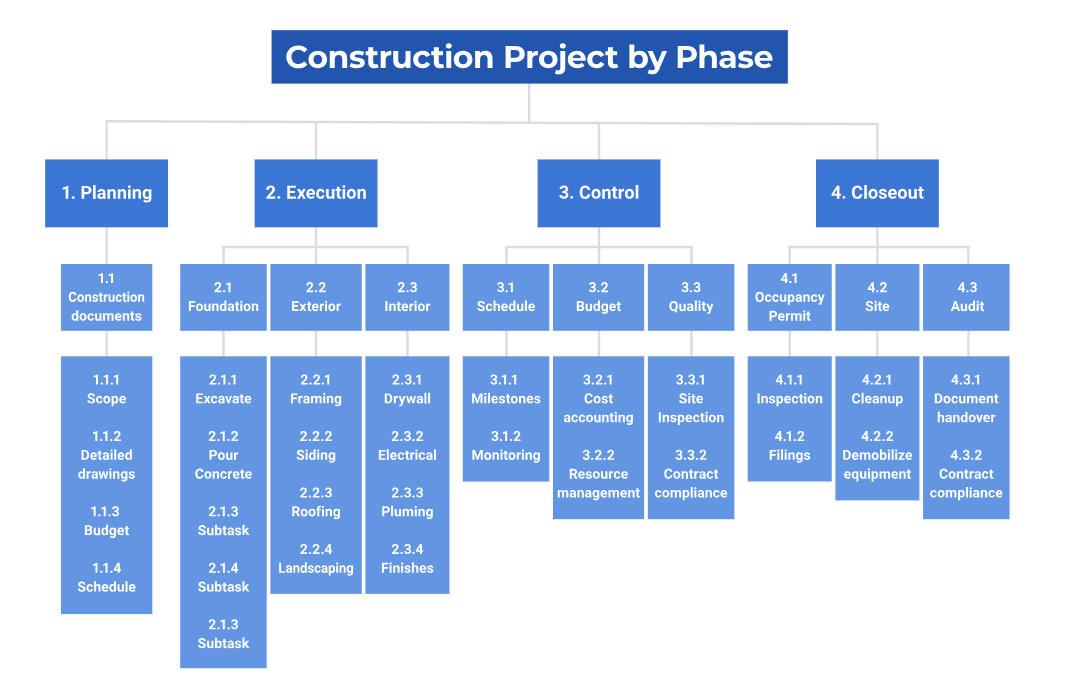
Efficient Work Breakdown Structure (WBS) and Construction Project Planning: A Comprehensive Guide
Efficient project planning is crucial to the success of any construction project. It requires careful consideration of various factors, including work breakdown structure (WBS) development and project planning. In this article, we will explore the importance of work breakdown structure, delve into its construction, and discuss the overall construction project planning process.
**********Understanding Work Breakdown Structure (WBS)**********
Definition of Work Breakdown Structure
- The WBS is a hierarchical representation of project deliverables, organized into manageable components.
- It transforms complex projects into smaller, more manageable tasks.
- Each work package in the WBS represents a unique component with defined scope, time, cost, and resources.
- The WBS provides a clear framework for organizing and understanding project activities.
**********Purpose and Benefits of WBS**********
Scope Management
- Helps define project scope and deliverables.
- Ensures stakeholders have a shared understanding of project objectives.
Task Allocation
- Facilitates task division and assignment.
- Enables clear identification of responsible parties.
Project Estimation and Budgeting
- Provides a foundation for estimating costs and resources.
- Allows for accurate budget allocation and tracking.
Schedule Development
- Enables the creation of a realistic project schedule.
- Helps identify critical path activities and dependencies.
**********Developing a Work Breakdown Structure**********
Identify Project Objectives
- Clearly define the project's goals, deliverables, and success criteria.
- Consult with stakeholders to ensure alignment.
Decompose Deliverables
- Break down project deliverables into smaller, manageable components.
- Utilize a top-down approach, dividing the project into major phases or milestones.
Define Work Packages
- Each work package should be distinct, measurable, and achievable.
- Assign a unique identifier, description, and time/resource estimates to each package.
- Create a hierarchical breakdown structure, with sub-tasks falling under higher-level ones.
Review and Refine
- Regularly review and refine the WBS to ensure accuracy and completeness.
- Seek input from relevant team members and stakeholders, incorporating their expertise.
**********Construction Project Planning Process**********
Project Initiation
- Define project scope, objectives, constraints, and stakeholders.
- Determine the project team and roles.
Project Requirements and Constraints
- Gather and analyze project-specific requirements.
- Identify any regulatory, environmental, or budgetary constraints.
Work Breakdown Structure Integration
- Integrate the WBS with the project plan and ensure alignment with project objectives.
- Define dependencies and sequencing of work packages.
Resource Allocation and Scheduling
- Identify and allocate resources required for each work package.
- Develop an overall project schedule with realistic timelines.
Risk Identification and Mitigation
- Assess potential risks and develop mitigation strategies.
- Include contingency plans to address unforeseen events.
Communication and Reporting
- Establish regular communication channels to coordinate project activities.- Develop reporting mechanisms to track progress, risks, and issues.
Effective work breakdown structure development and construction project planning are essential for successful project execution. The WBS provides a systematic framework for organizing project components, while the planning process ensures accurate estimation, resource allocation, and risk management. By following these principles, construction professionals can enhance project control, increase efficiency, and achieve project objectives with greater confidence.